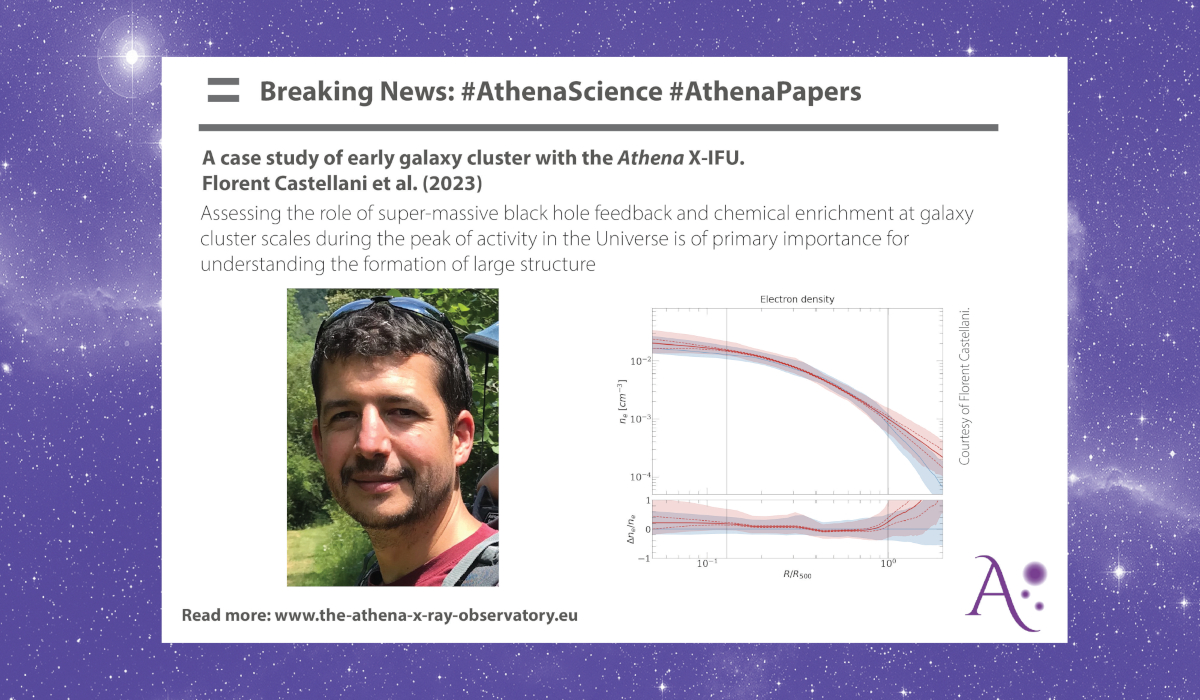

Caption inset figure: Electron density profiles as a function of cluster-centric distance, normalized by the cluster typical radius R_500. The blue curve represents the median profile extracted from the Hydrangea distribution gas particles, with dispersion indicated as a shaded region. The red curve is our best fit, including dispersion. The lower panel indicates the level of agreement between the reconstructed and input profiles.
By Florent Castellani,
Assessing the role of supermassive black hole feedback and chemical enrichment at galaxy cluster scales during the peak of activity in the Universe (i.e. around redshift z=2) is of primary importance for understanding the formation of large structures. In this article, we investigated the capabilities of the X-IFU instrument aboard Athena to characterise the thermodynamical properties of an early galaxy cluster. We performed mock X-IFU observations, using SIXTE software, of a numerically simulated galaxy cluster at z=2 with mass M_500=7 10^13 M_sun, extracted from the Hydrangea cosmological SPH simulation. We analysed the hyperspectral images with a forward-modeling procedure. We recovered the range of thermodynamical and chemical abundance profiles explaining our mock data set by means of standard Bayesian Monte-Carlo Markov Chains.
Thanks to the exceptional collecting area of the Athena mirrors and the high instrumental throughput, a single X-IFU pointing lasting 100 ks enables the reconstruction of density and pressure profiles with 20% accuracy out to R_500. Temperature and entropy profiles are reconstructed with 50% accuracy, while a ten-fold increase in exposure time is required to retrieve chemical abundance profiles with acceptable precision. This study in particular highlights the importance of modelling the scatter around the radial thermodynamic profiles, which is a cause of substantial dispersion in the observables projected along the line-of-sight.

